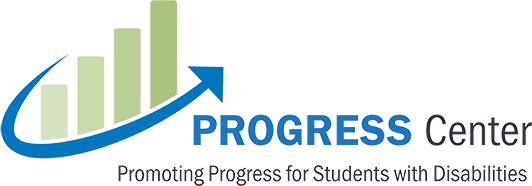This log from the National Center on Intensive Intervention can be used as a daily and weekly record of your implementation of an individual student’s intensive intervention plan or specially designed instruction. This information, along with progress monitoring graphs, can inform team intervention and data review meetings. You may choose to supplement the logs with additional items or more detailed notes or adapt for use documenting additional supports and services.
These two modules from the IRIS Center introduce users to progress monitoring in reading and mathematics. Progress monitoring is a type of formative assessment in which student learning is evaluated to provide useful feedback about performance to both learners and teachers. Because the overall progress monitoring process is almost identical for any subject area, the content in the two modules is very similar.
This four part course is designed to support faculty and professional development providers with instructing pre-service and in-service educators who are developing and/or refining their implementation of explicit instruction. This course provides learners with an opportunity to extend their understanding of explicit instruction through in-depth exposure to the explicit instruction model and supporting practices required for effective implementation.
The Transition Coalition online modules are developed using up-to-date research, effective practices in professional development, and materials and resources for implementation. They are for anyone involved in transition planning and can be used as self-paced modules or facilitated using a series of module study guides. The modules cover best practices in planning for transition, transition assessment, working with families, enhancing employment outcomes and more.
This video highlighting the high-leverage practices (HLPs) focuses on providing positive and constructive feedback to guide students' learning and behavior. This video is intended to support teacher educators and new teachers with concrete, easy-to-access examples of HLPs in action, in real classrooms, with real students. The videos and supporting resources are easily and freely accessible online, offering a practical, real-world illustration of HLPs by teachers intentionally and explicitly using the practice to meet the specific needs of students in their classrooms.
This online guide was developed in collaboration with education partners to help states establish a vision for effective, inclusive principal leadership and advance that vision statewide to improve outcomes for the success of each child, including those with disabilities. This guidance can support states in strengthening principals’ capacity to lead inclusive schools in which each student has an equitable opportunity to succeed.
This webpage from the Center for Parent Information & Resources is available in both English and Spanish. It can help families of students with disabilities to learn about special education, how special education services can support your child, and how parents can be an effective partner with your child’s school.
Transition planning officially begins between the ages of 14 and 16 for most students with an IEP. However, the process is lifelong. This section of NTACT's website provides resources and tools to guide the process of transition planning - encompassing assessment and skill development to plan for success beyond school.
This series of data meeting tools are developed to support individualized problem-solving teams for students with severe and persistent learning and behavioral needs. The collection includes sample agendas, facilitation materials, participant guides, note-taking templates, and decision-making tools for initial and ongoing data meetings.
